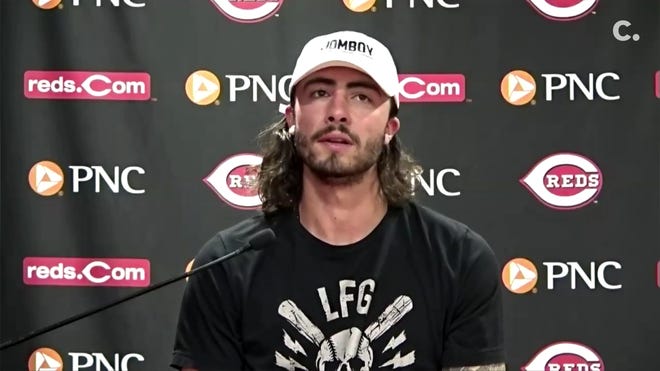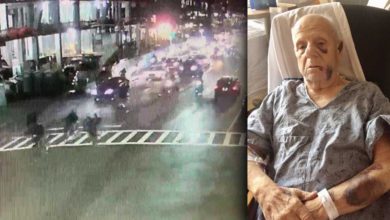
OKLAHOMA CITY — High-profile inmate Julius Jones was given another chance to get off death row Monday after maintaining his innocence to the Oklahoma Pardon and Parole Board.
Jones, 41, is facing execution for the 1999 fatal shooting of insurance executive Paul Howell during a carjacking in the Oklahoma City suburb of Edmond. Jurors chose the death penalty as punishment at a 2002 trial.
His execution date is set for Nov. 18.
“First, I feel for the Howell family, for the tragic loss of Mr. Paul Howell, who I’ve heard was a caring and all-around good person,” Jones said by videoconference. “Second, I am not the person responsible for taking Mr. Howell’s life.”
The board voted 3-1 for Jones' clemency. Board members recommended his sentence be reduced to life with the possibility of parole. Oklahoma Gov. Kevin Stitt will have the final say on Jones' future.
“Governor Stitt is aware of the Pardon and Parole Board’s vote today,” Stitt spokeswoman Carly Atchison said in a statement. “Our office will not offer further comment until the governor has made a final decision.”
Stitt’s predecessor, fellow Republican Gov. Mary Fallin, rejected three separate recommendations for clemency for people on death row. The last time a governor granted clemency to someone on death row was in 2010, by Democrat Brad Henry.
Jones, who was 19 at the time of his arrest, claims he is innocent and was framed by the actual killer. His case has attracted support from celebrities and well-known athletes.
Related:Oklahoma parole board recommends commutation of Julius Jones' death sentence
More:Oklahoma carries out first lethal injection since 2015, executing inmate for murder of prison worker
Millions signed a petition in Jones' support after ABC in 2018 aired the documentary series, "The Last Defense," about his innocence claim. His supporters include celebrity Kim Kardashian, who visited him last year at the Oklahoma State Penitentiary in McAlester.
If granted clemency, Jones would be eligible for parole immediately because of the prison time he's already served. Amanda C. Bass, an assistant federal public defender representing Jones, told the board Jones is “facing execution in two weeks for a crime he did not commit.”
Bass blamed Jones’ conviction and death sentence on systemic racism, under-resourced and inexperienced public defenders and prosecutorial misconduct.
Jones didn’t match an eyewitness description and was home when the murder took place, Bass told the board.

Jones was 19 at the time of his arrest. He claims he is innocent and was framed by the actual killer.
Seated next to his lawyer Monday at a table in the Oklahoma State Penitentiary in McAlester, Jones was dressed in a dark red prison uniform as he read from a prepared statement.
“I was not involved in the planning of this robbery, I was not present during this robbery, and I did not know that anyone had been killed until the day after Mr. Howell’s murder,” Jones said.
A state investigator in October told the Pardon and Parole Board that Jones has used his notoriety for financial gain through business calls from prison that were about marketing and branding concepts, the investigator reported in an affidavit.
Jones testified that he was at home with his parents and siblings on the evening when Howell was killed, but prosecutors said Jones himself previously told his trial lawyers that wasn't true.
“Jones repeatedly and unequivocally told his attorneys that his parents were mistaken and that he was not at home the night of the murder," said Assistant Attorney General Jennifer Crabb.

Jones was directly implicated at trial in the fatal shooting by his friend, Christopher Jordan. Under a plea agreement, Jordan pleaded guilty to first-degree murder and conspiracy to commit a robbery for his role and was sentenced to 30 years in prison.
Jones claims Jordan is the actual killer and framed him to get a deal.
Trial transcripts show witnesses identified Jones as the shooter and placed him with Howell’s stolen vehicle. Investigators also found the murder weapon and a bandanna with Jones’ DNA in an attic space above his bedroom. Jones said in his commutation filing that the gun and bandanna were planted there by the actual killer.
But Bass, said his criminal trial was corrupted by the use of junk forensic science, jailhouse informants and a plea deal for the co-defendant who testified against him.
“In these ways and more, the criminal justice system failed Mr. Howell,” Bass said. “It also failed Julius by condemning him to death for something he did not do.”
Paul Howell’s sister, Megan Tobey, testified before the board that she distinctly remembers seeing Jones shoot her brother in front of his two young daughters.
“He is the same person today as he was 22 years ago. He’s still getting into trouble. He’s still in a gang. He’s still lying. And he still feels no shame, guilt or remorse for his action,” Tobey said. “We need Julius Jones to be held responsible.”
USA TODAY Network:From a murder charge to requests to commute his execution, a timeline of Julius Jones' case
Julius Jones case:Oklahoma AG accuses two parole board members of bias, wants them off clemency hearing
The board’s vote Monday came less than a week after the state executed its first prisoner in more than six years. Convicted murderer John Marion Grant, 60, was executed by lethal injection Thursday inside the Oklahoma State Penitentiary.
Grant was serving time in 1998 for armed robbery when he fatally stabbed 58-year-old Gay Carter with a sharpened screwdriver multiple times in a kitchen at the Dick Conner Correctional Center in Hominy.
The U.S. Supreme Court allowed his execution to proceed after Grant and Jones were initially given stays the day before by the 10th U.S. Circuit Court of Appeals in Denver. The high court’s 5-3 decision potentially cleared the way for several executions in the next few months.
Before Grant was put to death, Oklahoma’s most recent scheduled execution was Sept. 30, 2015. Authorities stopped that execution after a doctor discovered the wrong deadly drug — potassium acetate — had been supplied. Officials said afterward the same mistake had been made in an execution in January that year.
Contributing: The Associated Press
Source link









